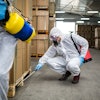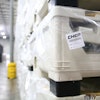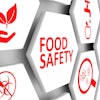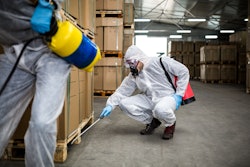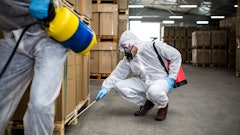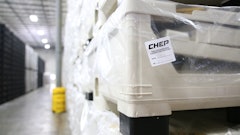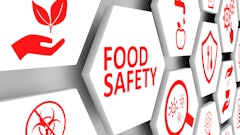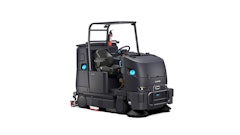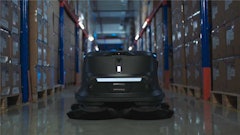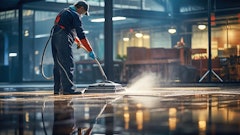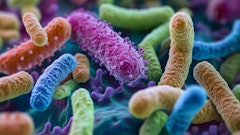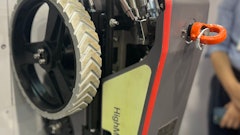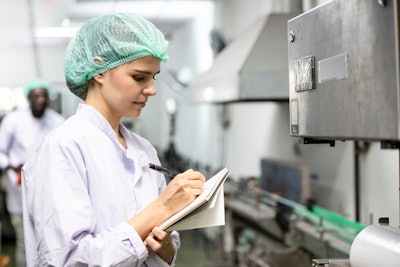
In today's fiscally constrained environment, many businesses are grappling with the challenge of maintaining a safe and sanitary environment without breaking the bank.
The food manufacturing industry is certainly no exception. It’s a business that requires adherence to highly regulated standards, while simultaneously maintaining high volume output at a brisk pace.
Balancing cost-effectiveness with effective cleaning and disinfection practices can seem like an insurmountable task, but with careful planning and strategic implementation, it’s a challenge that can be overcome.
Here are some key points to keep in mind:
Prioritize high-use areas
The first step in creating a budget-friendly cleaning program is to identify areas that require the most frequent cleaning and disinfection. These are typically areas that see a high frequency of use – food processing conveyor belts, large mixers, choppers, and other food manufacturing equipment. By focusing on these areas and equipment, you can ensure that the most critical areas are receiving the necessary attention without wasting resources on areas that are less prone to food build-up or contamination.
Focusing on these areas is important for multiple reasons. Food processing and manufacturing machinery that’s not kept clean can be breeding grounds for bacteria and viruses, which can easily spread to food through contact with contaminated surfaces. Regular cleaning and disinfection can significantly reduce the risk of infection and illness, and prevent the business risks from contamination.
Clean machinery helps prevent contamination of food products. Any residues from previous processing runs, such as allergens, bacteria, or foreign materials, can compromise the safety and quality of the current batch.
As important as cleaning these areas are, it’s also important to consider what you clean them with. Some commonly used cleaning solutions can actually contain toxic chemicals that can adversely affect consumers' health if consumed inadvertently. Also, processing and manufacturing equipment can be quite costly – it’s important to avoid chemicals that can corrode this equipment.
Lastly, many industries have specific regulations regarding cleaning and disinfection. For example, bakeries across the country all need to register with the FDA, in addition to complying with more local guidelines. In New York, bakeries must be registered with the New York State Department of State to obtain any necessary licenses and permits. Additionally, they must ensure they comply with local zoning and health department regulations. The specific type of license depends on factors such as the scale of the operation and whether they operate from a commercial location or as a home-based bakery. For commercial bakeries, they need to obtain a Food Service Establishment Permit from the New York State Department of Agriculture and Markets. Home-based bakeries may require a Cottage Food License or Home Processor License. No matter how you slice it, their cleaning process needs to be fully baked before they can start raking in the dough. Regular cleaning ensures compliance with these regulations and helps to avoid fines or penalties.
Opt for cost-effective cleaning products
When it comes to cleaning products, it’s important to be smart with your budget and make it work for you. With traditional cleaners, there can often be hidden costs that you’re not necessarily thinking of, like shipping and storage. You can actually save money by consolidating cleaning supplies and producing them on-site. New, alternative cleaning technologies like electrolyzed water allow facilities to produce effective, versatile and safe cleaning supplies onsite, replacing the need for regular shipping costs and eliminating the requirement to order multiple solutions that ultimately have the same main goal: cleaning and sanitization. Using an alternative that allows you to produce solutions onsite will not only save you money on supplies, but it will also reduce the amount of storage space you need.
For food manufacturers constantly producing at a maximum output, the cost of acquiring cleaning supplies in bulk can also be reduced by producing your own supply on-site. By generating on-site cleaning solutions, you’re able to control your own inventory – you’re not paying as you go for supplies, shipping costs, and/or recycling and disposal fees for expired products or empty packaging. That’s all saved money that can be put back into your organization.
Facilities that produce their own cleaning solutions onsite are also not at risk of supply chain delays that have been more and more common in recent years. Another perk is that on-site generated products are also better for the environment, as you’re eliminating unnecessary transportation that can increase a businesses’ carbon footprint.
Track inventory and consolidate chemicals
Another way to save money on cleaning supplies is to track inventory and consolidate chemicals. By knowing how much of each product you have on hand, you can avoid unnecessary purchases. And by consolidating your chemicals, you can reduce the number of different products you need to purchase, which can save you money in the long run.
Using fewer chemicals can also reduce the risk of accidents and injuries, because employees will be familiar with the chemicals they are using and know how to handle them safely. Furthermore, chemical consolidation makes training new hires and seasonal/temporary workers easier since you have fewer chemicals to train them to use.
A consolidated approach to cleaning and disinfecting chemicals can also help to improve efficiency by reducing the amount of time and effort spent on cleaning and disinfection. This is because employees will not have to waste time mixing different chemicals or trying to figure out how to use them properly.
Implement a regular cleaning schedule
Once you have identified priority areas and selected the cleaning products, it is important to implement a regular cleaning schedule. This schedule should be based on the level of traffic and usage of each area. For example, high-traffic areas may need to be cleaned daily, while less-used areas may only need to be cleaned weekly or even monthly.
In addition to regular cleaning, it is also important to disinfect high-touch areas regularly. This can be done using a variety of methods, such as wiping surfaces with a disinfectant solution or using an electrostatic sprayer.
When cleaning areas where food is prepared, attention to detail is even more important. Food preparation surfaces, such as countertops, cutting boards, and utensils, can harbor harmful bacteria like Salmonella, E. coli, and Listeria, which can cause foodborne illnesses. Regular cleaning alone may not be sufficient to eliminate these microorganisms. Disinfectants play a crucial role in killing or inhibiting the growth of bacteria, viruses, and other pathogens.
Peroxyacetic acid, hydrogen peroxide, and quaternary ammonium compound disinfectants, which are commonly used in commercial facilities and kitchens, can be effective against a broad spectrum of microorganisms. However, it is essential to follow the manufacturer's instructions for cleaning and contact time to ensure proper disinfection while avoiding surface damage. Like many other disinfectants, they may require surfaces to be properly rinsed after treatment in order to prevent toxic chemicals from contaminating the food. Newer, alternative cleaning and disinfecting solutions, like those that utilize hypochlorous acid, do not require this rinsing process because they are composed of all natural, non-toxic ingredients, which is why more and more manufacturing facilities are starting to look to them as efficient alternatives.
Engage employees in responsible disinfection practices
In addition to implementing a regular cleaning and disinfection program, it is also important to engage employees in responsible practices. This includes teaching them how to properly clean and disinfect surfaces, as well as how to dispose of used cleaning materials.
Encourage employees to report any spills or other messes immediately so that they can be cleaned up promptly. This will help to prevent the spread of germs and keep your facility clean and healthy.
Moving forward
Maintaining a safe cleaning and disinfection program does not have to be expensive. Create a program that is effective and affordable. Remember to prioritize high-use areas, opt for cost-effective cleaning products, track inventory, and implement a regular cleaning schedule. By engaging employees in responsible disinfection practices, you can further reduce the risk of germ transmission and create a healthier workplace for everyone.

